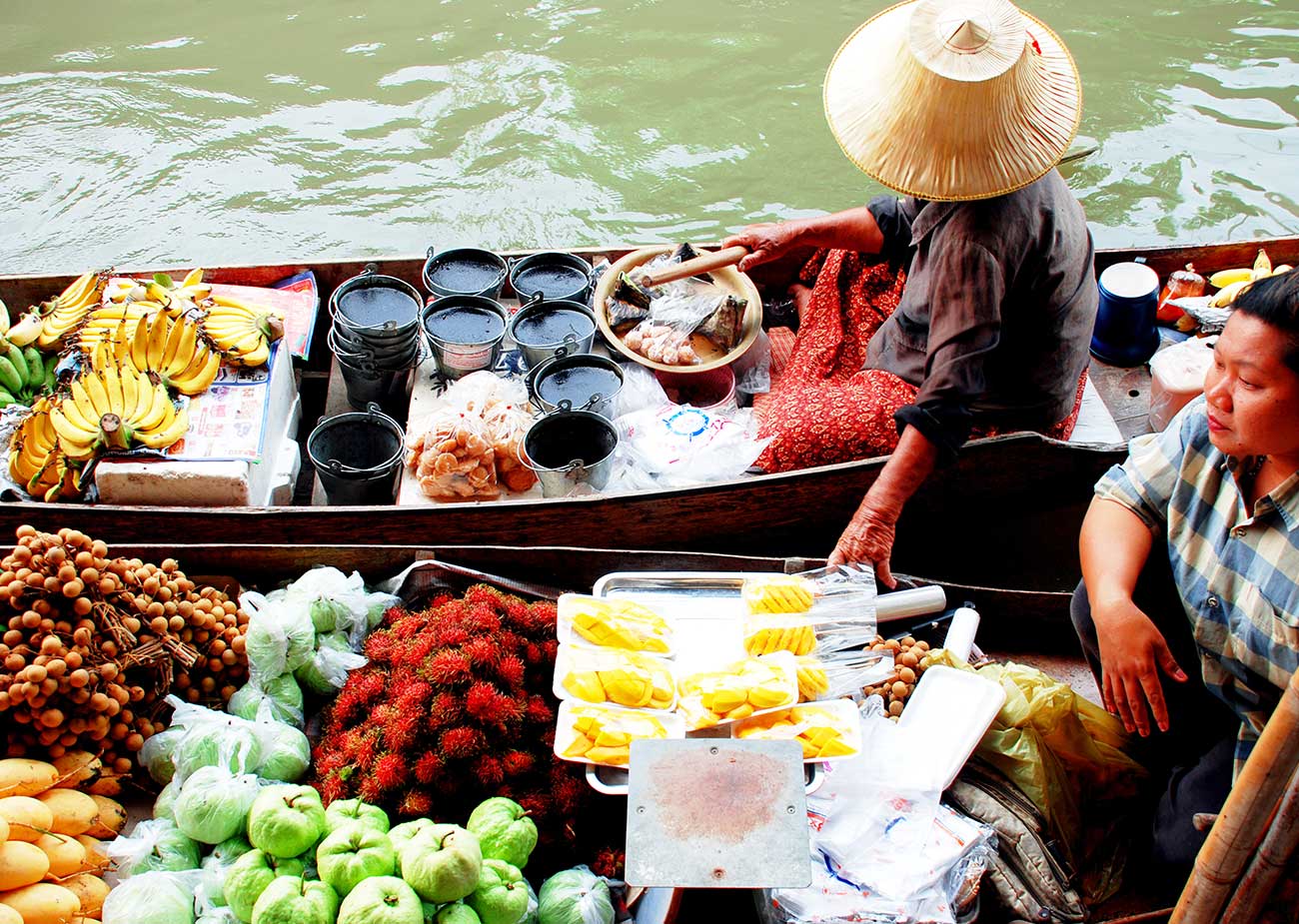
Backpacking Laos: A Full Travel Guide for You
Why go Backpacking in Laos?
Laos has two very different regions: the mountainous north and the farmlands of the south.
The south has plenty of famous attractions, like the temples of What Phu, the Bolaven Plateau an many other beautiful cascading waterfalls. You’ll also see many more rice fields here than up north.
The North is often cooler in temperature and offers wonderful mountain scenery and rainforests.
Laos’ most famous destinations include Luang Prabang, a charming city with plenty to do and see, and Vang Vieng, a party town on the river with access to water adventures. Even though these areas are the backpacker hot spots, it’s very easy to get off the beaten path in Laos, where tourism is far behind its neighbors.
Best time to visit Laos
Laos weather is at its very best between October and April, when it’s dry, warm and positively lovely day in, day out. Temperatures in Laos at this time do vary depending on the region (whether you’re at sea level or up in the mountains), but generally hover pleasantly between 20-27°C. The hottest months fall between April and May, when temperatures shoot up to an average of 30-34°C. If you’re visiting the Laos highlands (northern, eastern and central regions) the ‘green season’ falls between May and October. During this time you will experience brief, heavy showers, but they won’t affect your enjoyment. In fact, they provide welcome respite from the heat. The green season is so-named because it’s at this time of year that the countryside bursts into life, fuelled by the rains – flowers bloom, waterfalls flow and all the wildlife comes out to play.
Lowland Laos (the south) is at its best between November and January. Daytime temperatures are pleasant and the countryside is lush after the rains but evenings tend to be a touch chilly. Make sure you pack some layers. River travel is also best between November and January, just after the rainy season, as water levels are nice and high and fast-flowing, which means boats reach their destinations faster. If you’re visiting this neck of the woods between February and April, prepare for seriously steamy temperatures.
The monsoon and typhoon seasons both fall between May and November in Laos. During this time, plan for tropical downpours most afternoons. While it’s not impossible to enjoy the country at this time of year, torrential rain can seriously scupper travel plans, especially if you plan to travel between destinations by bus. The road network in Laos has improved vastly over the last decade, but many roads remain unpaved, particularly in rural areas. This is fine when the ground is hot and hard, but torrential rain can make your route akin to Glastonbury on a very bad year. This makes getting from A to B a massive struggle that can take hours longer than usual. Laos is home to almost 40 rivers, many of which are partial to flooding following heavy rain. Mountainous areas are also vulnerable to landslides at this wet time of year. However, it’s not all bad news, everything is cheaper during the rainy season, and the storms can really bring out the sights and smells of the Laos countryside; especially around Luang Prabang, the mountains surrounding Vang Vieng and in the National Protected Areas, of which there are 20! These protected areas make up a wonderful 14% of the country – we urge you to visit as many as possible. Should you go tubing at this time of year, be aware that the rainfall can really speed up the flow of the Nam Song River in Vang Vieng. This means much more care must be taken when tubing down river, especially after the obligatory beers you will likely be drinking en route.
Travelling into Laos from Cambodia…
Those travelling from Cambodia to Laos will enter into the beautiful Si Phan Don area of southern Laos. Buses from Phnom Penh to Stung Treng take six hours and go daily. From Stung Treng it’s two hours to the Laos border at Dom Kralor. Once across the border you can catch a boat to Don Det, the most popular of the islands with backpackers. If you choose to enter Laos this way, we recommend having your visa in place in advance to avoid being charged or not being able to secure a visa upon arrival at the border. Plan wisely so you arrive between 8am and 5pm to ensure the border is open.
Travelling into Laos from Vietnam…
Those travelling from Vietnam to Laos usually opt to travel from Hanoi in the north to Luang Prabang, or to Vientiane if you plan on catching a plane. A one-way plane ticket will cost in the region of £50. The overland route between Hanoi and Luang Prabang can be tricky and a little slow, particularly in rainy season. Again, make sure you secure your Laos visa in Vietnam before you travel, as there is no guarantee you’ll be able to secure one at the border.
Those travelling overland between Laos and China will cross at the Boten border in the very north of Laos close to Luang Namtha. The border is straightforward. It is not possible to enter Laos via Myanmar (Burma) as the border is closed to foreigners.
Transport in Laos
Transport in Laos can be slow, so ditch that ‘must-rush-everywhere’ attitude and decide to just go with the flow. Bus travel in Laos typically involves double decker night buses, which come with bunks, air-conditioning, blankets and pillows, a toilet and bottles of water. Always pack snacks, an eye mask, earplugs and a plastic bag to pop your shoes in when you board. The huge benefit of catching an overnight bus is that it gets you from A to B and it saves you having to pay for accommodation. A typical overnight journey will cost around £14. During peak season, securing a ticket can get competitive. This is exacerbated by the fact some companies won’t let you book your ticket until the day before you wish to travel. Therefore, it’s wise to factor in a little wiggle room around your travel dates where possible. If you know where you’re heading next, chat to your hostel or guesthouse to establish the best time to get the ticket booked and then follow their instructions.
A faster way of getting around Laos is via mini-van, which is ideal if you’re travelling shorter distances, such as from Vientiane to Vang Vieng or Thakhek to Savannakhet. Mini-vans cost around a fiver and there’s no need to book in advance. Simply rock up at the bus station, locate a mini-van with your destination on it and hop aboard. Be warned, these buses fill up – to the rafters – so expect to get up close and personal with a fair few strangers. Your bags will be tied to the roof and covered with a tarpaulin. Keep your passport, cash and valuables on you, plus the cash for your ticket. You will usually be asked for your fare a little distance out of town, so keep your bus fare somewhere you can access it. Where possible, get the earliest mini-vans of the day (7-7:30am). They leave on time, avoid traffic and are far less full of punters. Plus, you’ll arrive in your destination in good time to enjoy the day. Your parents will be so proud!
The most cheap and cheerful bus option is a Jumbo or Songthaew. Essentially, these are pick-up trucks that have been converted into giant tuk tuks. Fares are cheap (£1-2) but you’ll be packed in and there are no regular departure times. They are an ideal option for getting around towns and cities and to attractions outside of town, as are the typical smaller tuk-tuks which are everywhere in popular towns like Pakse and Vientiane, and which you’ll be familiar with if you’ve visited Thailand, Cambodia or Vietnam. If you’re planning a day trip to a waterfall or cave, ask your driver to wait for you so that you won’t encounter any bother getting back at the end of the day. Typically, a journey around town or to the airport or bus station in a tuk tuk will cost £4. You can also catch local buses, which are much cheaper than the tourist equivalents, but times are less predictable and you should expect to stop multiple times en route, whenever someone wants a cigarette, a toilet stop, or to be let off in the middle of nowhere!
When travelling by bus in Laos be aware that the roads are seriously windy. This not only means that journeys can take longer than they might look on the map, but that they can cause motion sickness, whether it’s you or the person next to you! A plastic bag in your backpack is a sensible idea.

